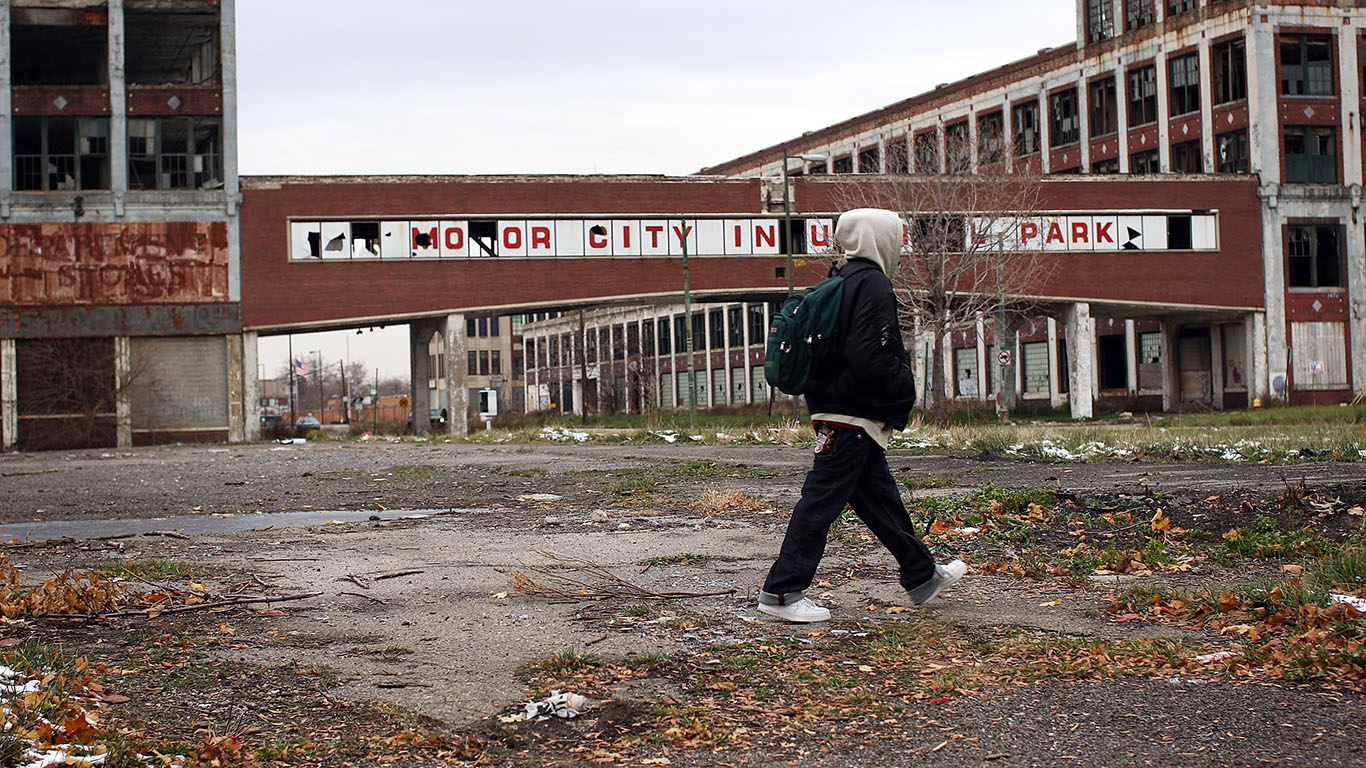Economy
More Economists Now Expect Recession, Trade Uncertainties to Blame

Published:
Last Updated:

U.S. economic growth in the fourth quarter is expected to be 2.2%, down from 2.5% in the fourth quarter of last year. Worse, in the fourth quarter of 2020, growth, as measured by inflation-adjusted (real) gross domestic product, is forecast to sag to just 1.8%.
The projections were released Monday in the National Association of Business Economics (NABE) October survey.
When asked when the U.S. economy will enter its next recession, somewhat more (47%, versus 42% in June) believe the next recession will begin in 2020. More (69%, versus 34% in February) now think the next recession will begin by mid-2021. Only 7% (up from 2%) of respondents think the recession begins this year.
The survey chair, Gregory Daco, chief U.S. economist for Oxford Economics, commented:
The panel turned decidedly more pessimistic about the outlook over the summer, with 80% of participants viewing risks to the outlook as tilted to the downside. The rise in protectionism, pervasive trade policy uncertainty, and slower global growth are considered key downside risks to U.S. economic activity. While a small majority of panelists expects that any action by the Federal Reserve on interest rates will be on hold through year-end of 2019, over 40% anticipate at least one more rate cut. Three-quarters of respondents expect at least one rate cut by the end of 2020, and a third expects at least two further rate cuts by the end of next year.
The dominant risk to economic growth is U.S. trade policy, cited by 53% of NABE economists. A third (35%) said reducing trade protectionism is the greatest upside risk to the global economy. More than a quarter (27%) see wage growth as the main upside risk.
Expected yields on 10-year Treasuries have dropped from 2.7% in the June survey to 1.75%. Last December, NABE economists had forecast a 10-year yield of 3.5% at the end of this year.
Two-thirds (69%) of economists surveyed expect at least one more federal funds rate cut by the end of 2020, and a third (35%) expects just one while 18% project two.
Job growth also declines. The median projection for 2019 monthly nonfarm payrolls is 164,000, a drop of 20,000 from the June projection. In 2018, nonfarm payrolls rose by a monthly average of 223,000. By the end of 2020, payrolls are forecast to rise by just 129,000 a month.
Business investment is also forecast lower than it was in June. Real nonresidential fixed investment is expected to rise by 2.9% this year and 2.1% next, compared with a prior estimate for growth of 4.1% in 2019 and 3.5% in 2020.
Inflation continues to be moderate and projections for both this year and next are below 2018 inflation of 2.4%. The outlook for this year calls for the GDP price index to rise by 1.8%, while the 2020 forecast sees a rise of 2.1%.
Core personal consumption expenditures (PCE) inflation (excluding food and energy) is expected to end the year at 1.8%, slightly lower than the 1.9% rate posted last December. Interestingly, a quarter (26%) of economists surveyed said the main reason for low core PCE inflation is “general lack of pricing power.” Another 17% blamed globalization and 15% cited high-volume, low-cost competition (what the economists called the Amazon effect).
Corporate profits for 2019 are now expected to rise by just 1.7% (the same as 2018) compared with a June estimate, for an increase of 4.6%. The median forecast for next year sees growth at 2.7%.
The NABE’s October outlook presents the macroeconomic forecast of a panel of 54 professional forecasters. The survey, covering the outlook for 2019 and 2020, was conducted September 9 to 16, 2019.
Want retirement to come a few years earlier than you’d planned? Or are you ready to retire now, but want an extra set of eyes on your finances?
Now you can speak with up to 3 financial experts in your area for FREE. By simply clicking here you can begin to match with financial professionals who can help you build your plan to retire early. And the best part? The first conversation with them is free.
Click here to match with up to 3 financial pros who would be excited to help you make financial decisions.
Thank you for reading! Have some feedback for us?
Contact the 24/7 Wall St. editorial team.